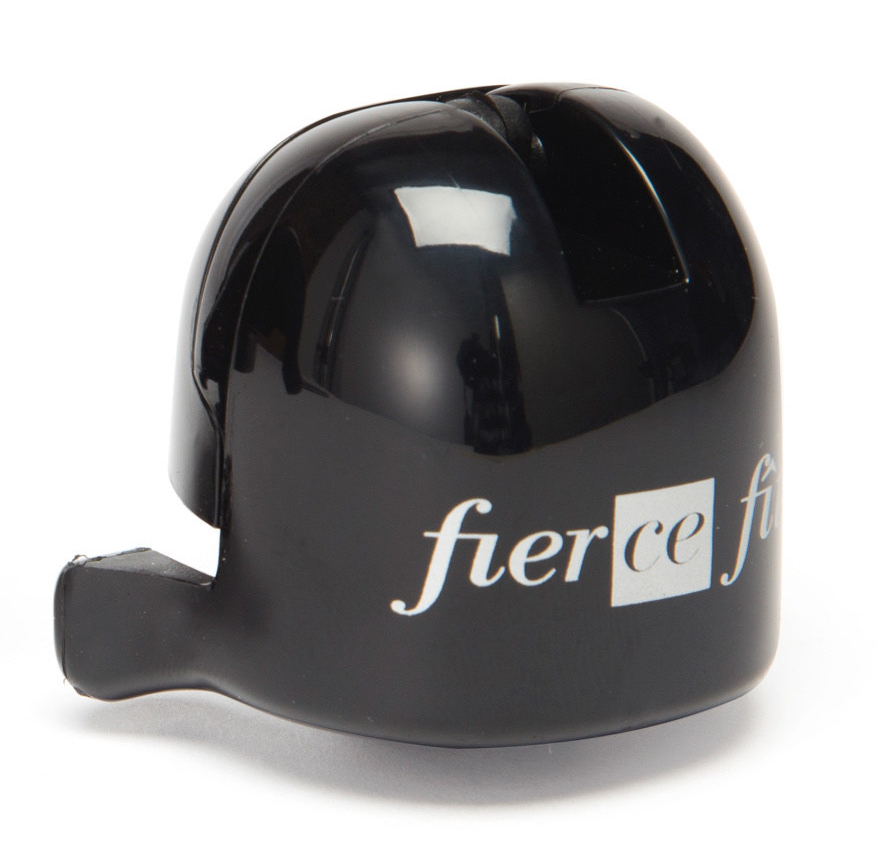FOOD-CHAMPAGNE PAIRING
Pairing a wine with a specific food which improves the characteristics of both.
TRADITIONAL BLENDING
A blend of grape varieties, Crus and reserve wines from different years, the percentage of which is questioned each year, in order to preserve, over the years, the excellence and style specific to each House.
CIVC
Interprofessional Committee of Champagne Wine.
Semi-public organization that manages and defends the common interests of Champagne producers and Maisons.
CRU
In Champagne, a Cru corresponds to a wine-growing municipality.
CUVÉE
In Champagne the word has two meanings.
- It designates the first 2,050 liters of must resulting from the pressing of 4,000 kilos of grapes.
- It designates the result of the blending.
ALCOHOLIC FERMENTATION
Biochemical process which, under the action of yeasts, transforms the sugar in grape juice into an almost equal amount of ethanol and carbon dioxide and into various compounds (higher alcohols, esters) that contribute to the aroma and flavor some wine.
MALOLACTIC FERMENTATION
It is the transformation of malic acid into lactic acid, under the action of lactic acid bacteria.
BOTTLES
Set of the different bottles available for Champagne:
- Quarter (20 cl)
- Half (37.5 cl)
- Bottle (75 cl)
- Magnum (1.5 liter)
- Jeroboam (3 liters)
- Mathusalem (6 litres)
- Salmanazar (9 liters)
- Balthazar (12 liters)
- Nabuchodonosor (15 liters)
CHALK
Champagne chalk, a form of pure limestone, thanks to its draining properties, prevents any excess humidity, leaving the vines with the ideal quantity of water and preventing the vines from water stress in the event of drought.
Offers the advantage of being able to dig deep cellars for the storage of wines, but above all we find its presence more or less markedly in the flute.
GYROPALETTE
This machine replaces the manual work of riddling allowing it to be carried out mechanically and in a shorter time.
The bottles are subjected to a slow rotating movement and gradually lifted. It therefore has the same functions as the console, but they are performed mechanically.
GRAND CRU
Cuvée coming exclusively from vineyards classified 100% in the Crus scale.
LEES
The lees are mainly composed of dead yeasts. They sediment and are found at the bottom of the vats and in the bottles after the second fermentation.
LIQUEUR DE TIRAGE
Traditionally composed of yeasts, sugar and Champagne wine, it is added for the fermentation.
DOSAGE or LIQUEUR D’EXPÉDITION
Made from Champagne wine and cane sugar, it is added after disgorging. The sugar content provided determines the type of Cuvée (Nature, Extra-Brut, Brut, Extra Dry, Sec, Demi-sec...)
MARC
In Champagne, the word has two meanings:
- Pressing unit corresponding to 4,000 kilos of grapes, the pressing capacity of a traditional press.
- Residues from pressing (skins, stalks, seeds, etc.)
MARLY
Earth rich in marl, that is to say a sedimentary rock formed, in almost equal doses, of clay and limestone.
VINTAGE
The choice to select a single year in the production produces atypical Champagnes, with a marked character, whose high-quality honors the Houses. It is produced only in very good years.
MINERAL
Characterizes a set of aromas reminiscent of certain minerals (chalk, sandstone, tufa, etc.)
MOÛT
Liquid product of the pressing of grapes, having a potential alcohol content of at least 8.5% and an actual alcohol content of less than 1%.
OXIDED
Champagne which, due to contact with the air, loses its freshness and its floral, quince and bitter almond aromas turn to Marsala.
PREMIER CRU
Cuvée composed only of Crus sides of 90 to 99% in the Crus scale.
PRESS
The Champagne presses are of different types:
Traditional vertical presses controlled manually (28% of the park).
Horizontal presses, with lateral membrane, with inclined plates or with rotating belt, controlled by computer consoles.
The capacity of the presses varies from 2,000 to 12,000 kg of whole grapes.
Traditional VERTICAL presses
- The grapes are placed in a basket.
- A push plate descends to crush the grapes.
- The juice flows out of the chute.
LATERAL MEMBRANE automatic presses
- The grapes are placed in a cylindrical cage equipped with a pneumatic membrane on one side.
- As it swells, the membrane crushes the grape.
- The juices flow through internal drains.
Horizontal hydraulic press WITH INCLINED PLATE
- The grapes are placed on a filtering mesh.
- An inclined side tray moves to crush the grapes against the other side tray which is fixed.
- The juice runs out through the filter medium.
Between each marc, the press must be emptied and cleaned with water.
As part of sustainable viticulture, the pressing residues are delivered to the distillery and the wine effluents are treated 100%.
PUPITRE
The "pupitres" are tools / cellar furniture made up of two inclined and perforated wooden panels in which the neck of the bottles is inserted. Their function is to keep the bottles in an inclined position in order to collect on the cork the lees that are formed during the second fermentation of the Champagne. This phase takes place when the Cuvée is ready to be marketed.
INDIVIDUAL RESERVE
System put in place in Champagne, managed by the CIVC, which obliges each winegrower to keep a reserve in the event of a surplus harvest and of very good quality. This reserve can be released, by decision of the CIVC, to compensate for a bad harvest.
The reserve has 3 advantages:
- It is first of all a necessity for the winegrower in the face of the vagaries of viticulture.
- It is also an instrument of economic regulation which aims to reduce the alternative harms of overproduction and scarcity.
- Finally, the reserve contributes to improving the quality of wines kept in stock.
ROSÉ DE SAIGNÉE
Champagne Rosé de Saignée is produced by the maceration process for a few hours, from 24 to 48 hours at the most. Black-skinned grapes (Pinot Noir and Meunier), previously destemmed, must be left to macerate before pressing to give the juice the desired color. This method is called "bleeding".
This technique releases a palette of aromas of unique richness and power. This Rosé Champagne is exceptional, fruity, full-bodied, fragrant.
It takes time and skill, which gives Rosé de Saignée its great rarity.
THE SPÉCIAL CLUB
The origins of the Club go back to 1971.
A dozen Independent Winegrowers set themselves the goal of making known the originality of the Winegrower's Champagnes through their prestigious Cuvées. Intransigence in terms of quality is their unifying element. They come together in the "Club de Viticulteurs Champenois" and adopt a bottle exclusive to the Club establishing very strict rules: the production of Special Club Cuvées is only possible during great years and must contain vintage wines that have passed the examination of several tastings (in “vins clairs” before the “tirage” and after 3 years of aging in bottle).
In 1999, the club changed its name to become the "Club Trésors de Champagne". A name that evokes mystery, preciousness and hedonism.
TEXTURE
CROWN CAPSULE
Small metal cover crimped on the neck of the bottle and fitted with a gasket that seals against contact with the glass.
Used for temporary plugging during foaming and ripening, in addition to a plastic obturator that is placed in the neck called "bidule".
TIRAGE
Bottling process.
Chardonnay
Grape with yellow-green skin and colorless pulp, Chardonnay, a more delicate vine, as it is earlier and therefore sensitive to spring frosts but with a later ripening than the other local varieties, covers 29% of the Champenois vineyard, mostly on the terroirs of the Cote des Blancs, where each municipality, from Avize to Mesnil-sur-Oger, has made its own specific reputation and notoriety.
The slow evolution of this vine makes it an ideal complement for the excellent aging of wine. Blended with Pinot Noir and Meunier, it "illuminates the picture" and dynamizes the whole. However, purists and amateurs especially appreciate it when vinified alone.
This light grape with floral aromas brings delicacy, freshness and elegance and is the vine that represents all the finesse of Champagne par excellence.
Pinot Noir
The earliest of the local varieties is this grape with black skin and colorless pulp, appreciated for its generosity and ability to adapt to the multiple terroirs of Champagne.
It reigns on the slopes of the Montagne de Reims, from Bouzy to Rilly-la-Montagne, from Tours-sur-Marne to Cumières, and dominates the Côte de Bars, making up 38% of the vineyards.
It is the most common grape in the Grands Crus and Premiers Crus villages.
It gives the wine its complex and fruity aromas with the famous notes of wild berries and adds body, length on the palate and longevity to the blending.
Meunier
It is an ancient variant of Pinot Noir but more rustic than the latter.
Cultivated for its resistance and its ability to adapt to sectors with difficult ripening and exposed to the risk of spring frosts, this grape with black skin and colorless pulp, very common in the Vallée de la Marne, Aisne and Côte des Bars, occupies 33% of the area of the Champenois vineyard.
When tasted it is very similar to Pinot, even if its aromas are more fruity, giving the wine freshness and roundness.
Arbanne, Pinot Blanc, Pinot Gris and Petit Meslier
To the 3 vines that dominate Champagne, there are 4 other vines that were voluntarily abandoned as they are less resistant to the difficult latitude to reappear timidly today.
There are 4 white grape varieties: Arbane, Petit Meslier, Pinot Blanc and Pinot Gris.
They are authorized and represent the 0.8% of the vineyard.
TYPOLOGIES
BLANC DE BLANCS
Champagne composed exclusively of Chardonnay grape which gives it a fresh and delicate taste.
BLANC DE NOIRS
Champagne composed solely of black vines, Pinot Noir or Meunier or both, characterized by the power of the first and / or the fruity of the second.
ROSE
Rosé Champagne comes from the blending of Champagne and "still" Champagne red wine (5-10%) before the elaboration. The palette of colors varies from delicate pink to intense pink and their taste from the lightest to the most structured.
CUVEES SPÉCIALES OU DE PRESTIGE
Of the highest quality, these Cuvées are even more linked to the choice of Maisons. They are the most chic category of production and account for approximately 5%.
BSA - NON-MILLESIME
It is blended with Cuvées from different vintages. To maintain a constant style, the Maisons keep the reserves of old vintages, year after year.
BRUT NATURE
According to the qualifications based on the sugar dosage, Brut Nature contains 0g / l. It is also called non dosé, or dosage zero.
EXTRA BRUT
According to the qualifications based on the sugar dosage, Extra Brut contains from 0 to 6g / l.
BRUT
According to the qualifications based on the sugar dosage, Brut contains from 6 to 12g / l.
EXTRA DRY
According to the qualifications based on the sugar dosage, Extra Dry contains from 12 to 17g / l.
SEC
According to the qualifications based on the sugar dosage, the Sec contains from 17 to 32g / l.
DEMI-SEC
According to the qualifications based on the sugar dosage, the Demi-sec contains from 32 to 50g / l.
DOUX
According to the qualifications based on the sugar dosage, Doux contains more than 50g / l.

 My bag
My bag
 The Boutique
The Boutique
 Login
Login
